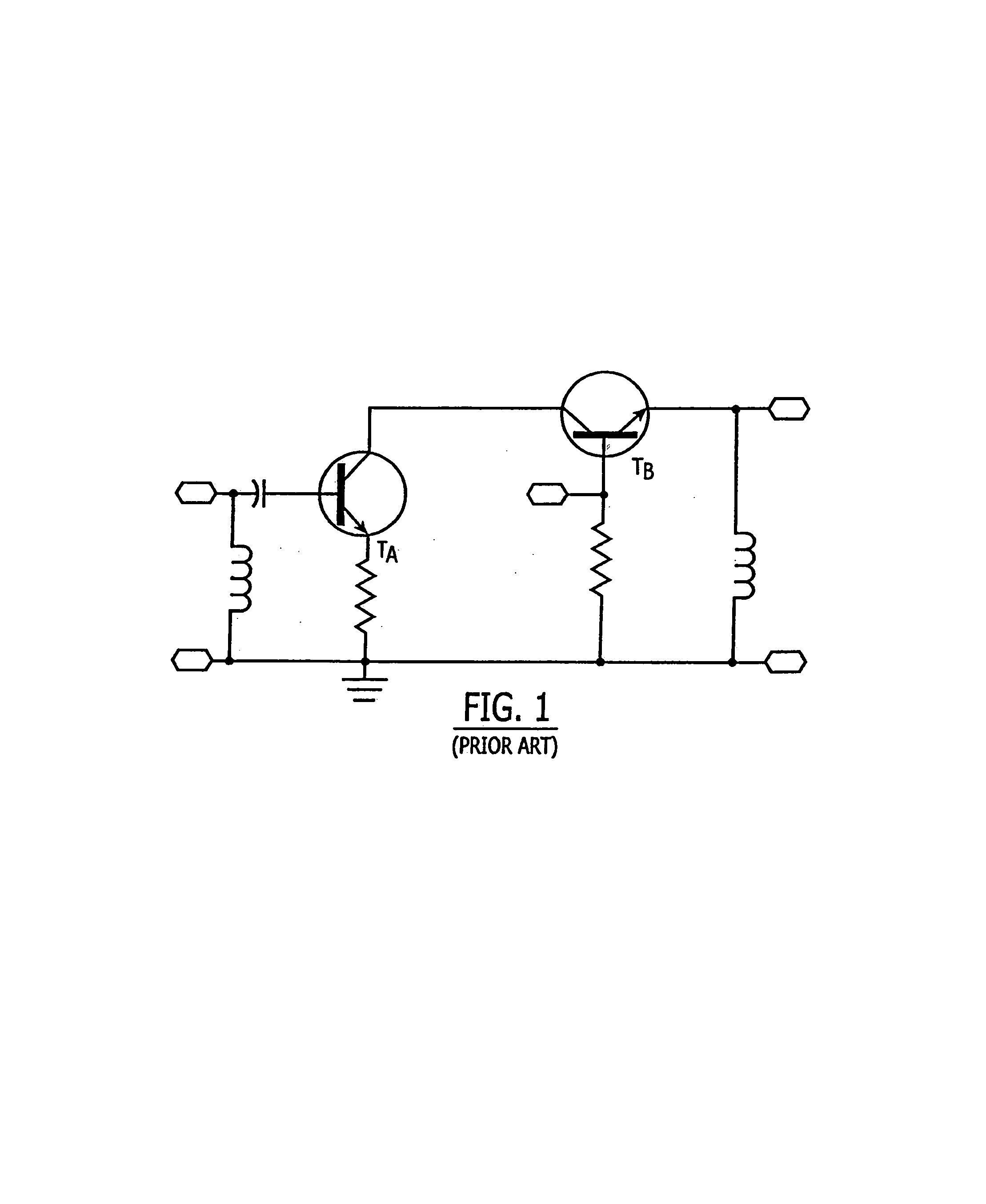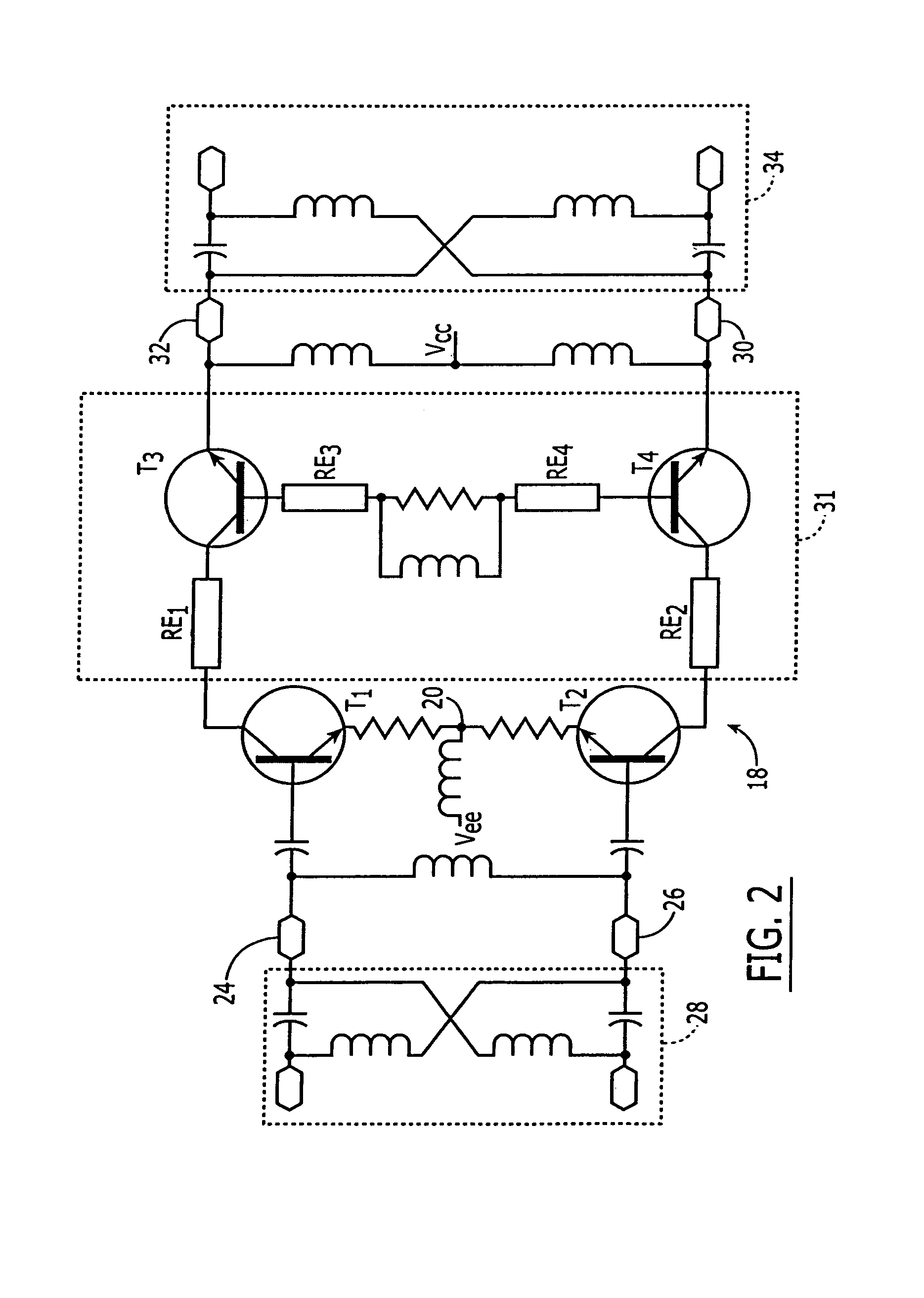SiGe differential cascode amplifier with miller effect resonator
a technology of cascode amplifier and miller effect, which is applied in differential amplifiers, amplifiers with semiconductor devices/discharge tubes, amplifier details, etc., can solve the problems of reducing the maximum power that can be output from an amplifier, increasing the intrinsic capacitance of the transistor, and reducing the breakdown voltage of the transistor, so as to reduce the current amplification
- Summary
- Abstract
- Description
- Claims
- Application Information
AI Technical Summary
Benefits of technology
Problems solved by technology
Method used
Image
Examples
Embodiment Construction
[0012]The present invention provides a method and apparatus for obtaining power amplification at high frequencies (1–100 GHz) using Silicon-Germanium (SiGe) transistors.
[0013]SiGe devices consist of thin layers of Ge grown over Si. Because of the 4% difference in lattice structures, the resultant combination has lattices that are strained, allowing material parameters such as the band gap to be varied. In particular, the strained Si has increased carrier mobility (2–3 time greater than Si), allowing faster switching-speed transistors to be fabricated. The increased switching-speed, however, comes at the cost of reduced break down voltage of the devices. In a class A power amplifier, the power output is proportional to the product of the current and the voltage, i.e., power=Vrms·Irms / 2. The reduced break down voltage, therefore, significantly reduces the maximum power that can be output from an amplifier using SiGe transistors.
[0014]SiGe amplifiers exhibit a further reduction in powe...
PUM
 Login to View More
Login to View More Abstract
Description
Claims
Application Information
 Login to View More
Login to View More - R&D
- Intellectual Property
- Life Sciences
- Materials
- Tech Scout
- Unparalleled Data Quality
- Higher Quality Content
- 60% Fewer Hallucinations
Browse by: Latest US Patents, China's latest patents, Technical Efficacy Thesaurus, Application Domain, Technology Topic, Popular Technical Reports.
© 2025 PatSnap. All rights reserved.Legal|Privacy policy|Modern Slavery Act Transparency Statement|Sitemap|About US| Contact US: help@patsnap.com



